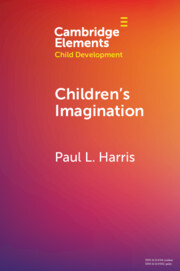Element contents
Children's Imagination
Published online by Cambridge University Press: 03 June 2022
Summary
- Type
- Element
- Information
- Series: Elements in Child DevelopmentOnline ISBN: 9781009067423Publisher: Cambridge University PressPrint publication: 23 June 2022
References
- 9
- Cited by



